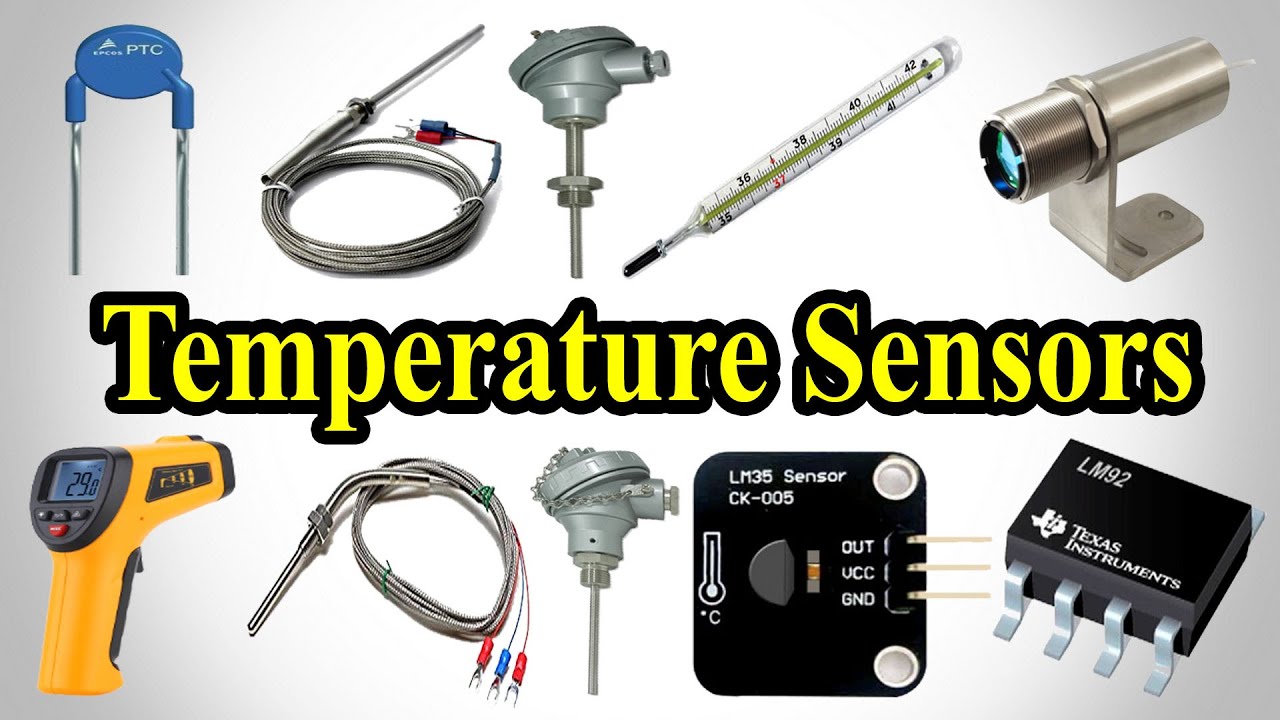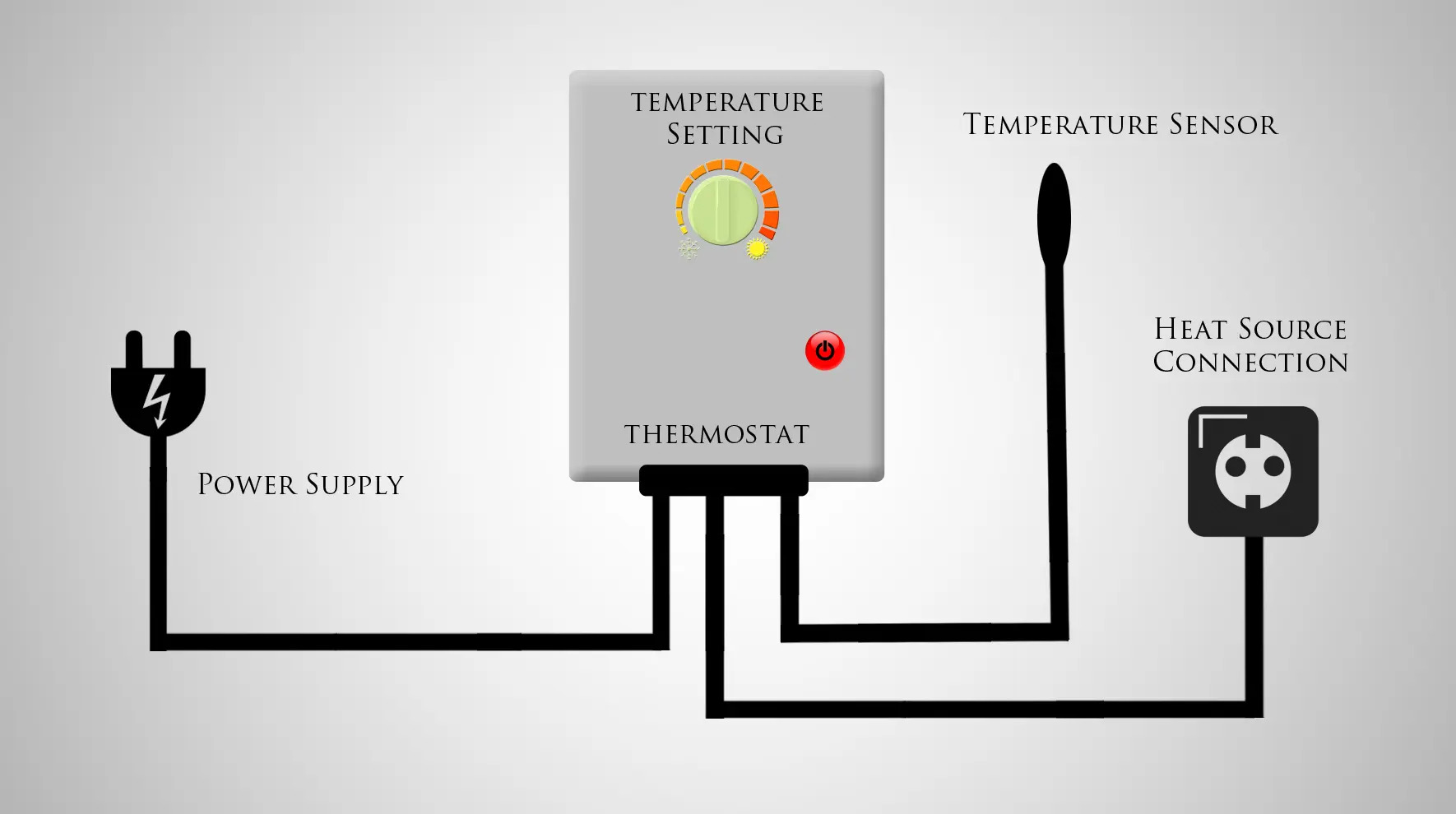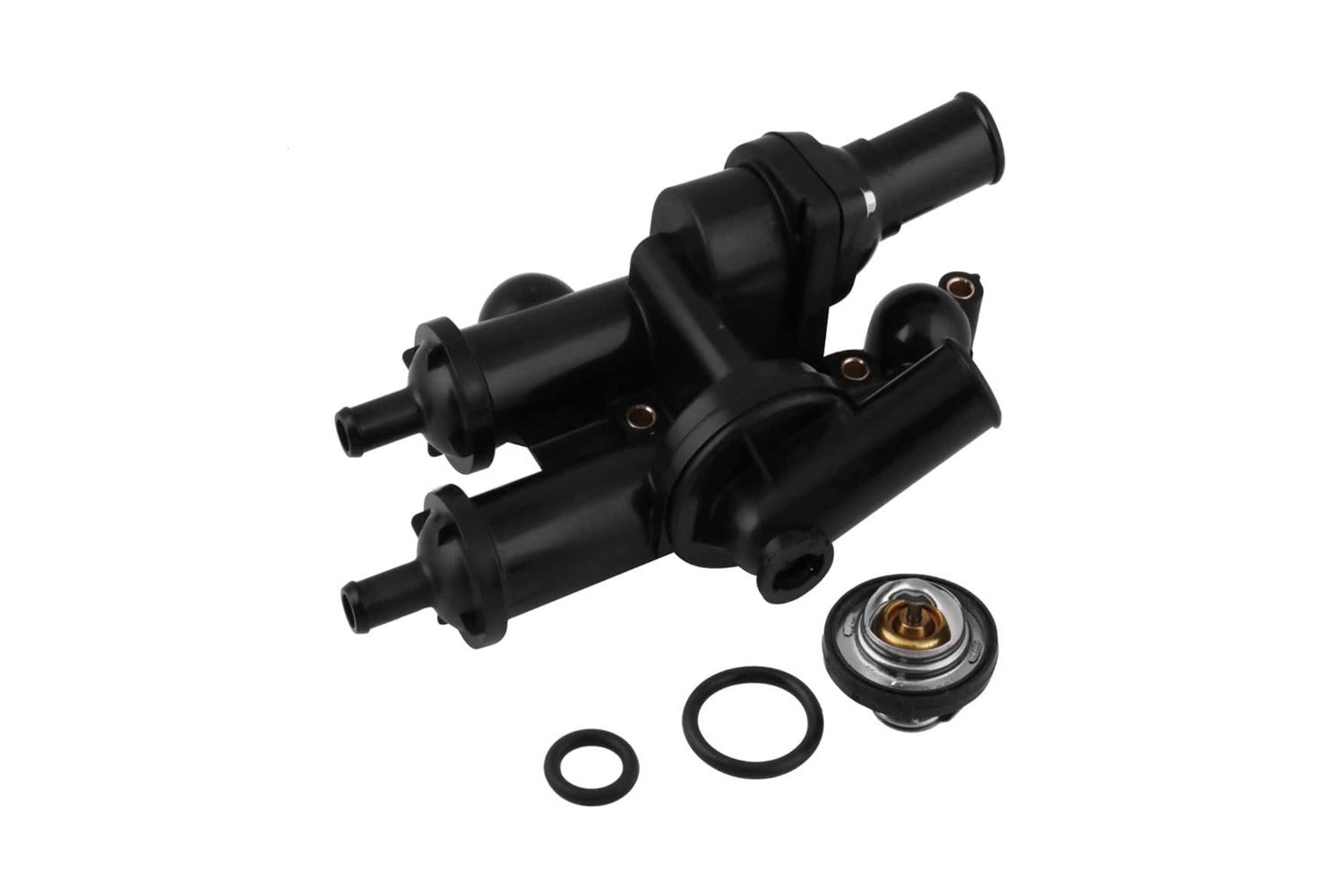Introduction
Temperature sensing elements are crucial components in mechanical thermostats, enabling them to accurately measure and control temperature in various applications. These elements play a vital role in ensuring optimal functioning of heating and cooling systems, as well as maintaining comfort and safety in residential, commercial, and industrial settings.
When it comes to mechanical thermostats, selecting the right temperature sensing element is essential. It determines how reliably the thermostat can detect changes in temperature and regulate the heating or cooling system accordingly. Different types of temperature sensing elements are available, each with unique characteristics and advantages.
In this article, we will explore the most common temperature sensing element used for mechanical thermostats. We will delve into the various types of temperature sensing elements, their working mechanisms, advantages, and disadvantages. By understanding these elements, you will be better equipped to make informed decisions when choosing a mechanical thermostat or troubleshooting temperature control issues.
Whether you are a homeowner, HVAC technician, or simply curious about temperature control, this article will provide valuable insights into the world of temperature sensing elements. So, let’s dive in and discover the key components that make mechanical thermostats so effective at temperature regulation.
Importance of Temperature Sensing Element in Mechanical Thermostats
The temperature sensing element is a critical component of mechanical thermostats as it is responsible for accurate temperature measurement. It plays a pivotal role in ensuring that the thermostat responds appropriately to changes in temperature, enabling efficient heating or cooling control. The importance of the temperature sensing element can be seen in the following aspects:
1. Precision Temperature Measurement: The temperature sensing element allows the thermostat to accurately measure the ambient temperature. This precision is crucial for maintaining comfort levels, preventing overheating or overcooling, and preventing temperature fluctuations that could impact equipment performance or human comfort.
2. Temperature Control: The temperature sensing element is integral for controlling the operation of the heating or cooling system. It detects changes in temperature and triggers the necessary adjustments to maintain the desired temperature setpoint. This ensures consistent and efficient temperature control, reducing energy consumption and maximizing comfort.
3. Energy Efficiency: By accurately sensing the temperature, the temperature sensing element helps optimize energy usage. It allows the thermostat to activate or deactivate the heating or cooling system based on the desired temperature setpoint. This prevents unnecessary energy consumption and reduces utility costs.
4. Safety Measures: In some cases, the temperature sensing element is crucial for ensuring safety. For example, in overheating situations, the thermostat can detect the rising temperature and trigger emergency shut-offs to prevent potential damage or hazards.
5. Compatibility: The temperature sensing element needs to be compatible with the specific system it is installed in. Mechanical thermostats utilize different types of temperature sensing elements, such as bimetallic strips, expansion tubes, or mercury switches. Choosing the right sensing element ensures optimal performance and accurate temperature control in accordance with the system requirements.
6. Longevity: The reliability and longevity of a mechanical thermostat heavily depend on the temperature sensing element. A high-quality sensing element ensures accurate and consistent temperature measurements, leading to prolonged lifespan and durability of the thermostat itself.
In summary, the temperature sensing element is a crucial component in mechanical thermostats. Its accurate temperature measurement, precise control, energy efficiency, compatibility, safety measures, and impact on longevity make it an essential part in ensuring optimal temperature regulation in various applications.
Types of Temperature Sensing Elements
There are several different types of temperature sensing elements that are commonly used in mechanical thermostats. Each type operates on different principles and has its own advantages and limitations. Let’s explore the most common types:
1. Bimetallic Temperature Sensing Element: This type of temperature sensing element consists of two metals with different coefficients of thermal expansion bonded together. As the temperature changes, the metals expand or contract at different rates, causing the bonded strip to bend. This bending motion is used to actuate the mechanical switch in the thermostat. Bimetallic temperature sensing elements are widely used due to their simplicity, reliability, and cost-effectiveness.
2. Expansion Tube Temperature Sensing Element: In this type of temperature sensing element, a coiled tube is filled with an expanding liquid, such as alcohol or gas. As the temperature rises, the liquid expands, causing the coiled tube to expand and contract. The movement of the tube is used to activate the switch within the thermostat. Expansion tube temperature sensing elements are known for their high sensitivity and accuracy.
3. Mercury Switch Temperature Sensing Element: This type of temperature sensing element uses a vial containing mercury, which is sensitive to temperature changes. As the temperature increases, the mercury expands, causing it to tilt and make contact with two electrical terminals, completing the circuit and activating the switch. Mercury switch temperature sensing elements are highly reliable and precise, but their use has been restricted due to environmental concerns surrounding mercury disposal.
4. Thermistor Temperature Sensing Element: Thermistors are temperature-sensitive resistors that change their electrical resistance in response to temperature variations. They are made of specially formulated semiconductor materials. The resistance change is measured and used to determine the temperature. Thermistor temperature sensing elements offer high accuracy, sensitivity, and a wide temperature range. They are commonly used in modern electronic thermostats.
5. Gas-Filled Temperature Sensing Element: This type of temperature sensing element contains a gas-filled bulb connected to a diaphragm or bellows mechanism. As the gas expands or contracts with temperature changes, it causes the diaphragm or bellows to move, activating the switch in the thermostat. Gas-filled temperature sensing elements provide good accuracy and fast response times.
These are just a few examples of the types of temperature sensing elements used in mechanical thermostats. Each type has its own benefits and considerations, and the choice depends on factors such as cost, application, accuracy requirements, and environmental concerns.
Bimetallic Temperature Sensing Element
The bimetallic temperature sensing element is one of the most common and widely used types of temperature sensors in mechanical thermostats. It employs the principle of differential expansion of two different metals to detect temperature changes. Here’s how it works:
A bimetallic temperature sensing element consists of two metal strips, typically made of different materials such as brass and steel, bonded together. These metals have different coefficients of thermal expansion, meaning they expand or contract at different rates as the temperature changes.
As the temperature increases, the metal strip with the higher coefficient of thermal expansion expands more than the other strip, causing the bonded strip to bend in one direction. Conversely, when the temperature decreases, the strip contracts, causing the bonded strip to bend in the opposite direction.
This bending motion is utilized to actuate a mechanical switch within the thermostat. When the bimetallic strip bends, it activates the switch, either connecting or disconnecting the electrical circuit, depending on the design of the thermostat.
The bimetallic temperature sensing element is valued for its simplicity, reliability, and cost-effectiveness. It operates without the need for additional power sources or complex electronic components. Because of its robust nature, it can withstand a wide range of temperatures and environmental conditions.
However, it’s important to note that bimetallic temperature sensing elements have their limitations. They may have lower accuracy compared to more advanced sensors like thermistors. Additionally, they have a slower response time, which means they may take longer to detect temperature changes and activate the switch in the thermostat.
Despite these limitations, bimetallic temperature sensing elements are widely used in various applications, including residential heating and cooling systems, ovens, and household appliances. Their simplicity and reliability make them a popular choice for mechanical thermostats, especially in situations where precision and rapid response are not critical factors.
In summary, the bimetallic temperature sensing element utilizes the differential expansion of two metals to detect temperature changes. Its simplicity, reliability, and cost-effectiveness make it a common choice in mechanical thermostats, although it may have lower accuracy and slower response times compared to more advanced temperature sensors.
Expansion Tube Temperature Sensing Element
The expansion tube temperature sensing element is another commonly used type of temperature sensor in mechanical thermostats. It operates through the expansion and contraction of a coiled tube filled with an expanding liquid, such as alcohol or gas. Let’s explore how this type of sensor works:
The expansion tube temperature sensing element consists of a coiled tube that is connected to a diaphragm or bellows mechanism. Inside the tube, there is an expanding liquid that is sensitive to changes in temperature. When the temperature increases, the liquid in the tube expands, causing the tube to elongate. Conversely, when the temperature decreases, the liquid contracts, causing the tube to contract as well.
The movement of the coiled tube is transmitted to the diaphragm or bellows mechanism. This mechanism translates the linear motion of the tube into a circular or rotational motion, which is then used to activate a mechanical switch within the thermostat.
The expansion tube temperature sensing element is known for its high sensitivity and accuracy in detecting temperature changes. The expansion and contraction of the liquid inside the coiled tube provide a precise measurement of temperature variations within the system.
This type of temperature sensing element offers several advantages. Firstly, it has a wide temperature range and can effectively measure both low and high temperatures. Secondly, it has a fast response time, allowing it to quickly detect temperature changes and activate the switch in the thermostat.
However, there are a few limitations to consider. The expansion tube temperature sensing element may be more expensive compared to other types of temperature sensors. Additionally, it may face challenges in certain applications where vibrations or extreme pressure variations can affect the accuracy of the temperature measurement.
Despite these limitations, the expansion tube temperature sensing element is commonly used in HVAC systems, refrigeration equipment, and industrial applications. Its high sensitivity, accuracy, and ability to measure a wide temperature range make it a reliable choice for maintaining precise temperature control.
In summary, the expansion tube temperature sensing element utilizes the expansion and contraction of a coiled tube filled with an expanding liquid to detect temperature changes. Its high sensitivity, accuracy, and fast response time make it a popular choice in mechanical thermostats, particularly in HVAC and refrigeration systems.
Mercury Switch Temperature Sensing Element
The mercury switch temperature sensing element is a widely used type of temperature sensor that incorporates the unique properties of mercury to detect temperature changes. Let’s explore how this type of sensor works:
The mercury switch temperature sensing element consists of a sealed vial or bulb containing mercury, a metal that is highly sensitive to temperature variations. Mercury is a liquid metal at room temperature and exhibits different levels of conductivity and fluidity as the temperature changes.
As the temperature increases, the mercury expands, causing it to rise within the sealed vial. When the mercury reaches a specific level, it makes contact with two electrical terminals inside the vial, completing the electrical circuit. This activation of the electrical circuit triggers the mechanical switch within the thermostat.
Conversely, as the temperature decreases, the mercury contracts and retreats to the bottom of the vial, breaking the electrical contact and deactivating the switch.
Mercury switch temperature sensing elements offer several advantages. Firstly, they provide high precision and accuracy in temperature detection. The expansion and contraction of the mercury provide a reliable indication of temperature changes within the system.
Secondly, mercury switch temperature sensing elements offer fast response times, enabling them to quickly detect temperature variations and activate the switch in the thermostat.
It’s important to note that the use of mercury in thermostats has become more restricted due to environmental concerns surrounding the disposal and handling of mercury. As a result, mercury switch temperature sensing elements are being phased out and replaced with more environmentally friendly alternatives.
Nevertheless, in older systems where mercury switches are still present, they continue to provide reliable and precise temperature measurements. Proper disposal methods should be followed when dealing with mercury-containing thermostats to ensure environmental safety.
In summary, the mercury switch temperature sensing element utilizes the expansion and contraction of mercury to detect temperature changes. Its high precision, fast response time, and reliable performance make it a widely used type of temperature sensor in mechanical thermostats. However, due to environmental concerns, its usage is being phased out and replaced with alternative temperature sensing elements.
Advantages and Disadvantages of Each Temperature Sensing Element
Each type of temperature sensing element used in mechanical thermostats has its own set of advantages and disadvantages. Let’s explore the pros and cons of each:
Bimetallic Temperature Sensing Element:
Advantages:
- Simple design with no additional power source required.
- Reliable and cost-effective.
- Can withstand a wide range of temperatures and environmental conditions.
Disadvantages:
- Lower accuracy compared to more advanced temperature sensors.
- Slower response time in detecting temperature changes and activating the switch.
Expansion Tube Temperature Sensing Element:
Advantages:
- High sensitivity and accuracy in detecting temperature changes.
- Wide temperature range for measuring both low and high temperatures.
- Fast response time in detecting temperature variations.
Disadvantages:
- May be more expensive compared to other types of temperature sensors.
- Challenges with accuracy in applications with vibrations or extreme pressure variations.
Mercury Switch Temperature Sensing Element:
Advantages:
- High precision and accuracy in temperature detection.
- Fast response time in detecting temperature variations.
Disadvantages:
- Restrictions on usage due to environmental concerns and the need for proper disposal methods.
- Phasing out and replaced by newer and more environmentally friendly alternatives.
Thermistor Temperature Sensing Element:
Advantages:
- High accuracy and sensitivity in measuring temperature.
- Wide temperature range with good linearity.
Disadvantages:
- Higher cost compared to other temperature sensing elements.
- May require additional calibration for accurate readings.
Gas-Filled Temperature Sensing Element:
Advantages:
- Good accuracy in temperature measurement.
- Fast response time in detecting temperature changes.
Disadvantages:
- Less commonly used compared to other temperature sensing elements.
- Possibility of gas leaks or pressure-related issues.
It’s important to consider these advantages and disadvantages when selecting a temperature sensing element for a specific application. Factors such as cost, accuracy requirements, response time, and environmental considerations play a crucial role in identifying the most suitable option.
Conclusion
Temperature sensing elements are vital components in mechanical thermostats, enabling accurate temperature measurement and control. Each type of temperature sensing element – bimetallic, expansion tube, mercury switch, thermistor, and gas-filled – has its own advantages and limitations.
Bimetallic temperature sensing elements offer simplicity, reliability, and cost-effectiveness, although they may have lower accuracy and slower response times. Expansion tube temperature sensing elements provide high sensitivity, accuracy, and fast response times, but may be more expensive and sensitive to vibrations or extreme pressure variations.
Mercury switch temperature sensing elements are highly precise with fast response times, but their usage is facing restrictions due to environmental concerns and the need for proper disposal methods. Thermistor temperature sensing elements offer high accuracy and sensitivity, whereas gas-filled temperature sensing elements provide good accuracy and response times.
When selecting a temperature sensing element, factors such as cost, accuracy requirements, response time, and environmental considerations should be taken into account. It’s crucial to choose the most suitable option for the specific application.
In conclusion, understanding the different types of temperature sensing elements used in mechanical thermostats allows for informed decision-making and optimal temperature regulation in various applications. Each type has its own trade-offs, and it is important to weigh the advantages and disadvantages when selecting the appropriate temperature sensing element.

























